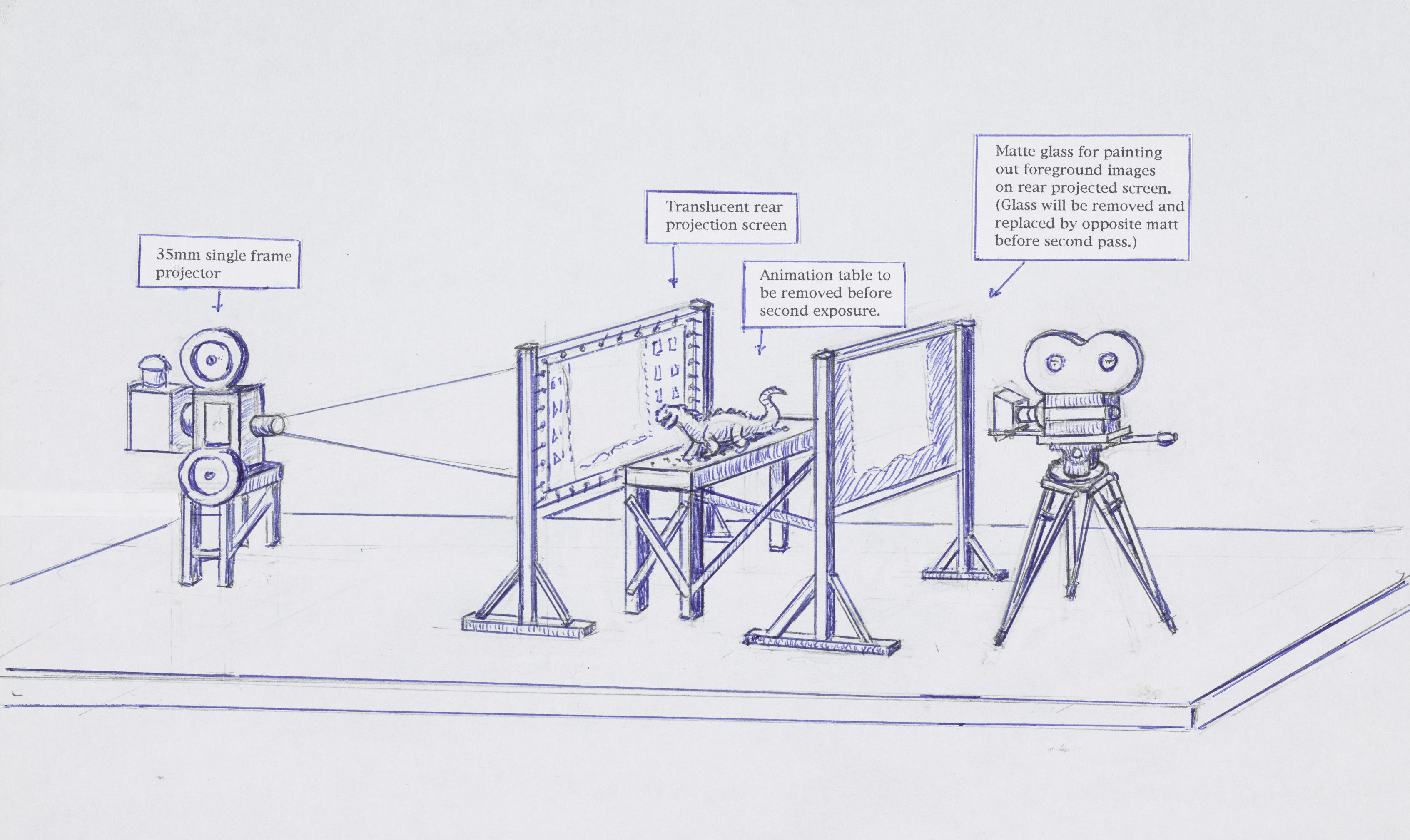
Ray's sketch demonstrating dynamation, © The Ray and Diana Harryhausen Foundation
Ray Harryhausen reimagined animation by combining stop-motion and live action. He called it "DYNAMATION".

Ray's sketch demonstrating dynamation, © The Ray and Diana Harryhausen Foundation
In this revolutionary process, live actors appeared to be interacting alongside animated creatures.
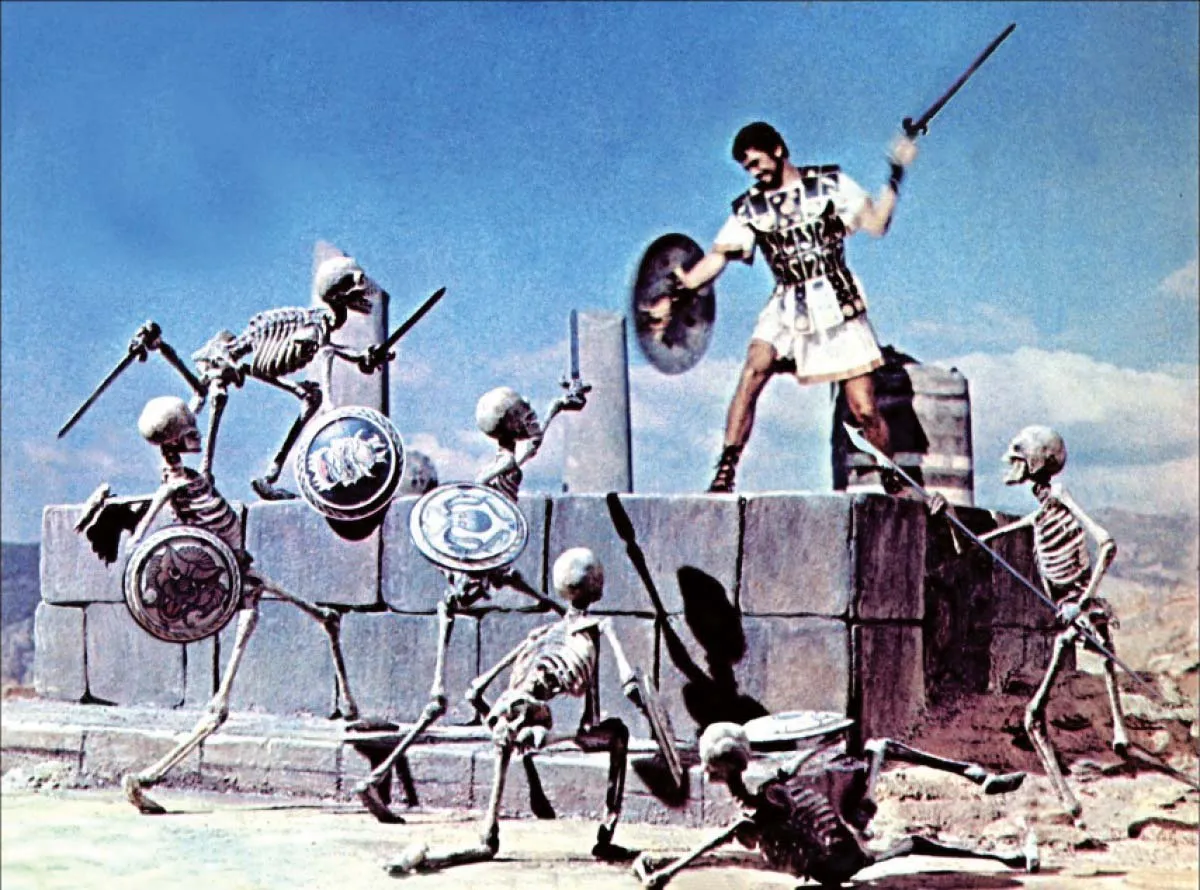
Jason and the Argonauts skeleton fight, © The Ray and Diana Harryhausen Foundation
Dynamation was first used in 1953 in The Beast From 20,000 Fathoms, receiving rave reviews.
"The first feature film on which Ray used the process was The Beast from 20,000 Fathoms (1952), but before beginning the production Ray made various tests to ensure the process he had devised, which was at this stage largely theoretical, would actually work…Fortunately, all the elements worked and The Beast from 20,000 Fathoms became a reality, Ray’s first solo feature film and an [sic] landmark in model animation and cinema history."
~ (Harryhausen and Dalton, A Century of Stop-Motion: From Méliès to Aardman 120)
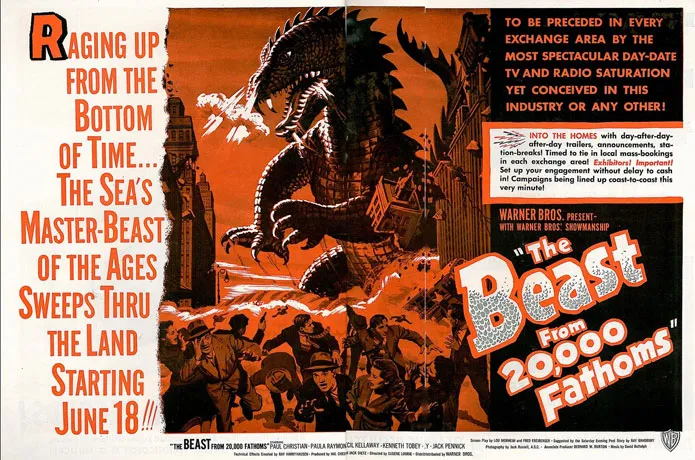
The Beast from 20,000 Fathoms Movie Poster, 1952, Warner Bros Entertainment Inc
Clip from The Beast from 20,000 Fathoms, 1952, Warner Bros Entertainment Inc
"The Motion Picture Herald said 'the real stars of The Beast From 20,000 Fathoms are the special and technical effects men... who have put together as weird a monster as anyone need have to disturb their nightmares'."
~ (Ray Harryhausen: An Animated Life 58)
The magic of Dynamation began in Harryhausen’s head. Ray’s unmatched artistry, imaginative storytelling, and extravagant enthusiasm conveyed his amazing ideas to directors and producers.
"Ray was quite unique… Most special effects people would be hired… They’d be told ‘we want to put a dinosaur in this sequence, can you do it?’ But the rest of the film would be made already. What Ray Harryhausen would do is make these drawings and present them to film producers and say, 'this is what I’d like to put in the next film,' and he’d create five to six (or more) really detailed key drawings, which would show the showpiece sequences and what his proposed movie would be. If the film was given the green light, he would work from there. Although he wasn’t the director of the films, they were very much his movies."
~ Connor Heaney (Heaney, Connor. Zoom interview by authors. May, 15, 2023.)

Skeleton scene concept drawing, © The Ray and Diana Harryhausen Foundation
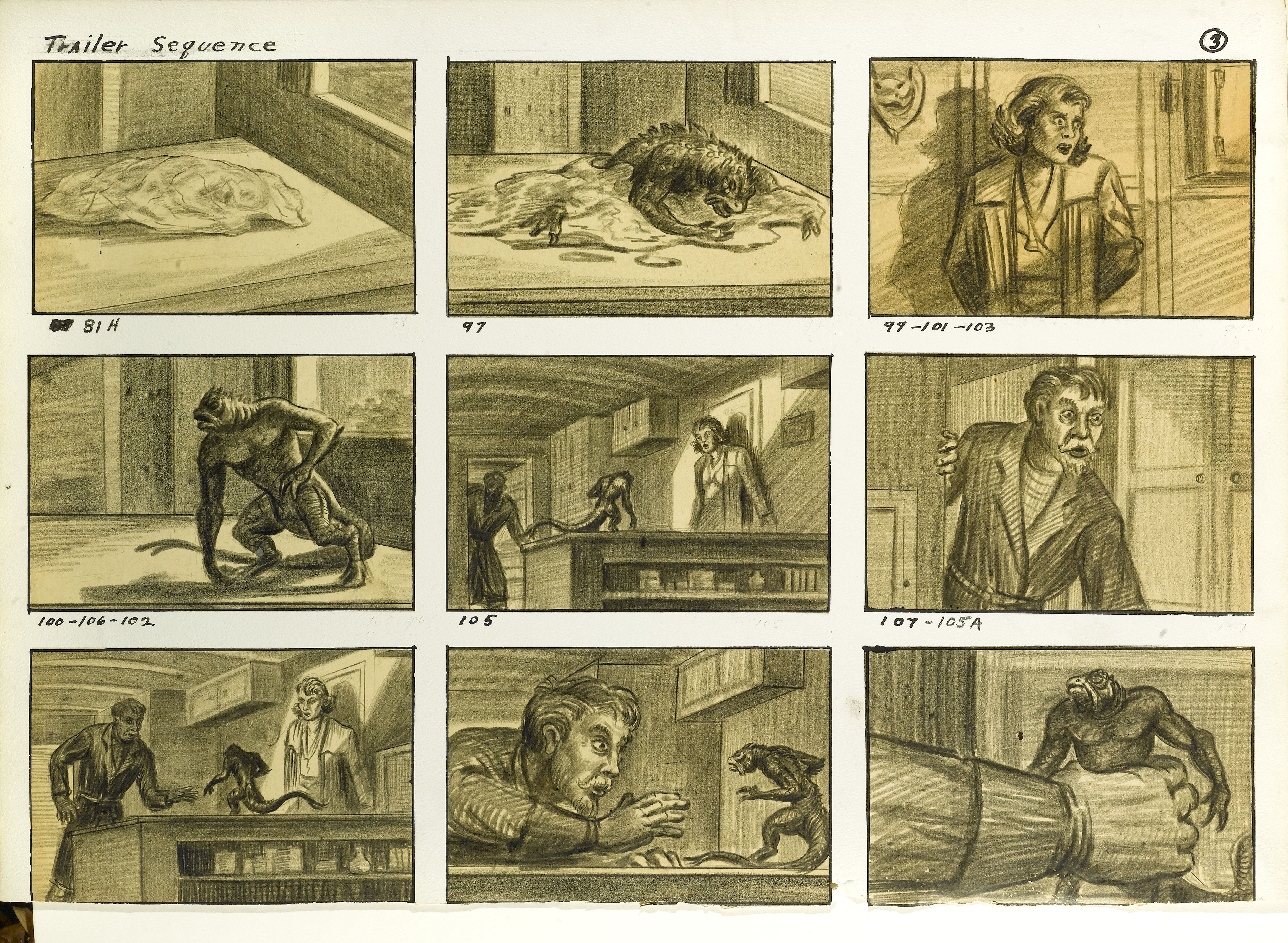
20 Million Miles to Earth storyboard, © Ray and Diana Harryhausen Foundation
After the live action was filmed, the next step was constructing armatures and puppets, breathing life into them.
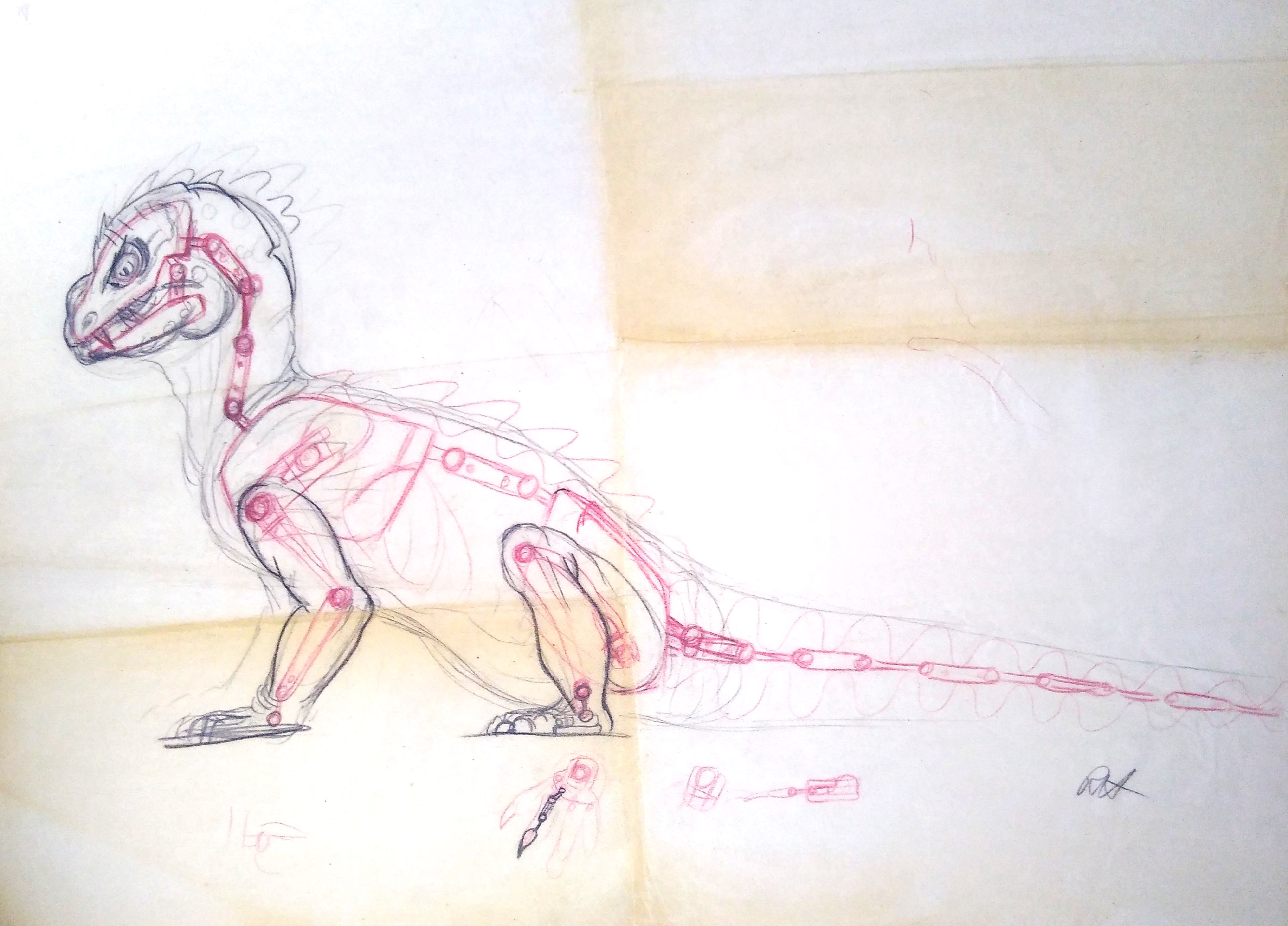
The Rhedosaurus Armature Sketch, © The Ray and Diana Harryhausen Foundation
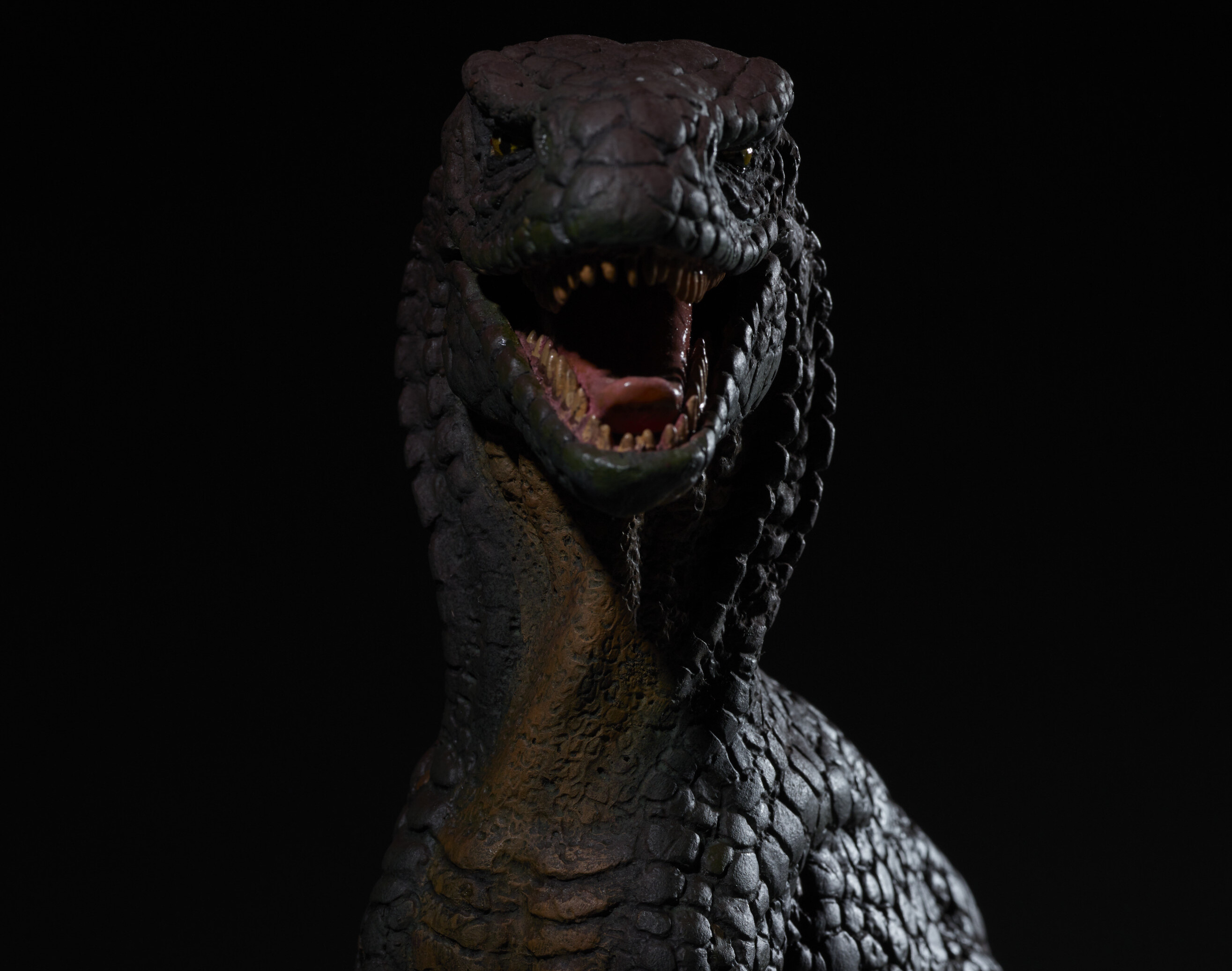
Rhedosaurus, 1953, © The Ray and Diana Harryhausen Foundation
"Ray’s creatures, the way they move, essentially is the way we think of dinosaurs, how they move..., even to this day."
~ John Landis (Ray Harryhausen: Special Effects Titan 00:13:33-00:13:43)
Ray Harryhausen’s creatures came alive on the screen. Due to his understanding of anatomy, they had realistic character, emotion, and dynamic movement.
"...Ray managed to give each of his creations a distinct personality or character. Had he not had a gift for this his models would have remained just that, models which would have failed to come to life on the screen."
~ Ray Harryhausen (A Century of Stop Motion: From Melies to Aardman 114)
"Harryhausen’s creations are memorable not only for their technical brilliance, but also for the emotional 'performances' of the creatures – he imbued them with a sympathetic expressiveness that enabled them to be read as ‘real’ characters we care about."
~ Chris Elliott (People's World)
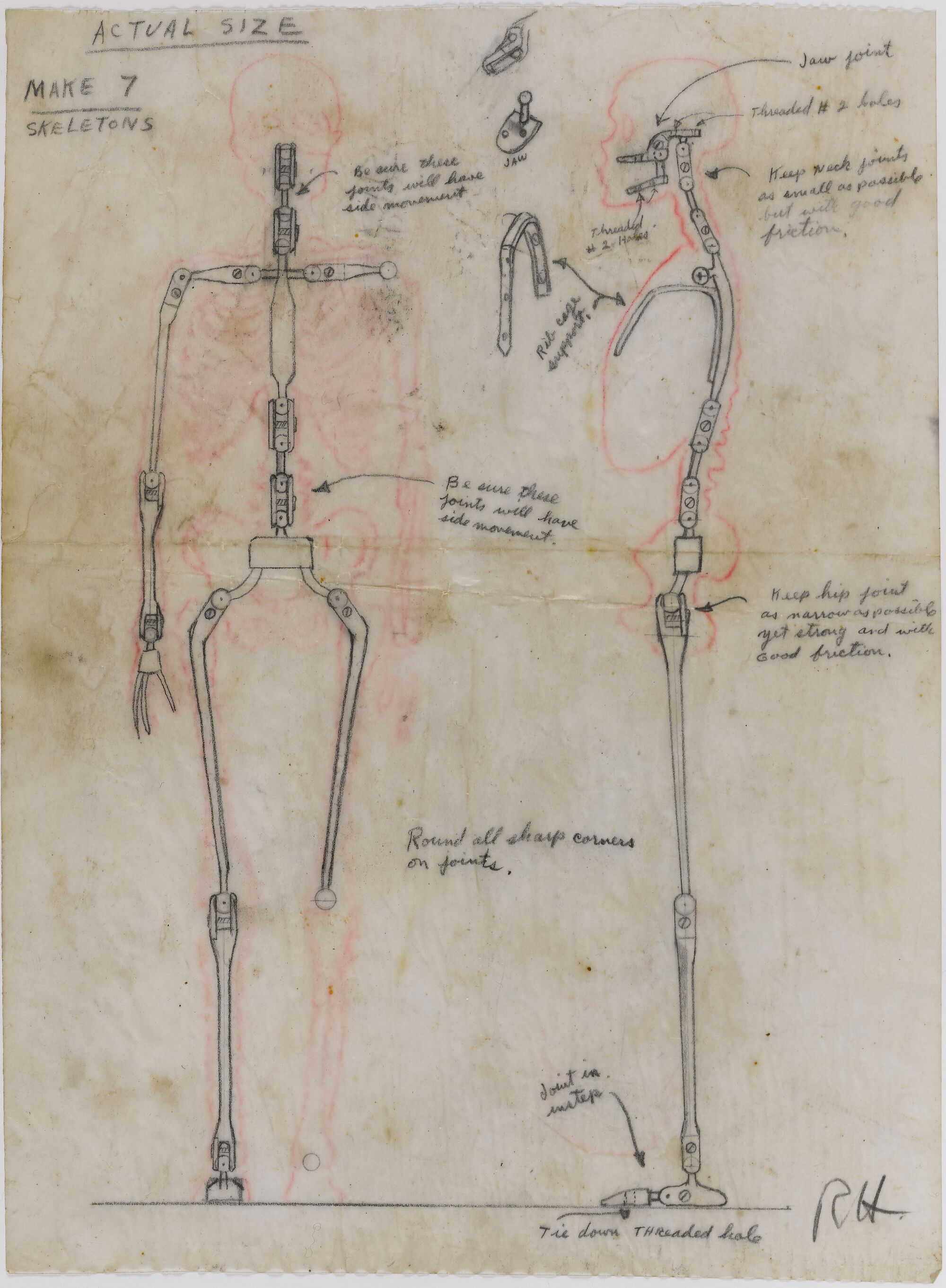
Early sketches of a skeleton, © The Ray and Diana Harryhausen Foundation.
In Harryhausen’s movie, Jason and the Argonauts, the skeletons were created with multiple articulations, enabling them to move naturally.
“I designed and animated into the skeletons certain human ‘touches’ to give them some character. For example, I was able to give the impression that a skeleton was mortally wounded, while another example occurs on the platform when a skeleton rolls to the edge, apparently stunned, with its bony arm hanging over the side. The arm can just be seen swinging with the force of the movement. It wasn’t something I needed to do, but these ‘touches’ add character and occasional relief to a scene."
~ Ray Harryhausen (Ray Harryhausen: An Animated Life 172)
Notably, this skeleton scene is thought to be one of the best pieces of Harryhausen’s Dynamation technique. He spent four and a half months working on this scene.
Jason and the Argonauts clip, Columbia Pictures
Ray Harryhausen had technical brilliance, unmatched patience, and meticulous methods when creating stop-motion. Because of this he usually worked alone. His extreme attention to detail and patience allowed him to make his gripping movies works of art, justifying the fact that Harryhausen's hands were insured for an incredible $1,000,000.
"Ray also realized that if he was to succeed at what he wanted to do he would have no choice but to work alone. He knew that, with his type of animation, independence was necessary...to achieve what he felt was right, he had to work as a one-man operation...it is because his films all bear the stamp of his own beliefs and methods that they have a unique cinematic look."
~ (A Century of Stop Motion: From Méliès to Aardman 120)
Harryhausen animating a skeleton, YouTube